Materials Show Highlights Advancements in Next-Gen, Bio-Based Inputs

Last week’s Northwest Materials Show drew more than 250 vendors across the footwear, accessories and apparel space to Portland, Ore., bringing with them the industry’s next generation of materials and bio-based solutions.
On Wednesday, about 1,600 attendees converged on the Oregon Convention Center. The crowd included several-hundred product developers from Nike’s nearby headquarters, as well as others from Adidas and the state’s growing collective of footwear and outdoor brands. According to trade show manager Hisham Muhareb, most were on the hunt for sustainable inputs like textiles, alt-leathers, foams and finishes that will allow them to shrink their companies’ ecological footprints while enhancing product performance.
More from Sourcing Journal
Material World: Ganni Elevates Next-Gen Materials at CPHFW, Keel Labs Debuts First Kelsun T-Shirt
New Balance Wants to 'Help Extend Product Life' Via New Resale Platform
The showroom floor was filled with exhibitors touting their ability to do just that. Huntington Beach, Calif.-based Newlight Technologies promoted its AirCarbon carbon-negative alloy, which can be added to traditional polymer resins to drive down their carbon impact.
“Ultimately what people do to decarbonize their products is either they buy carbon offsets, they make use of recycled material, or they use solar power to offset their power,” director of business development Todd Gasparik told Sourcing Journal. By contrast, AirCarbon is an innovative additive that can be plugged into their existing supply chains. The polyhydroxybutyrate (PHB) is made “by feeding methane in the atmosphere into a saltwater tank filled with microbes that come from the ocean that eat greenhouse gas as food,” he explained.
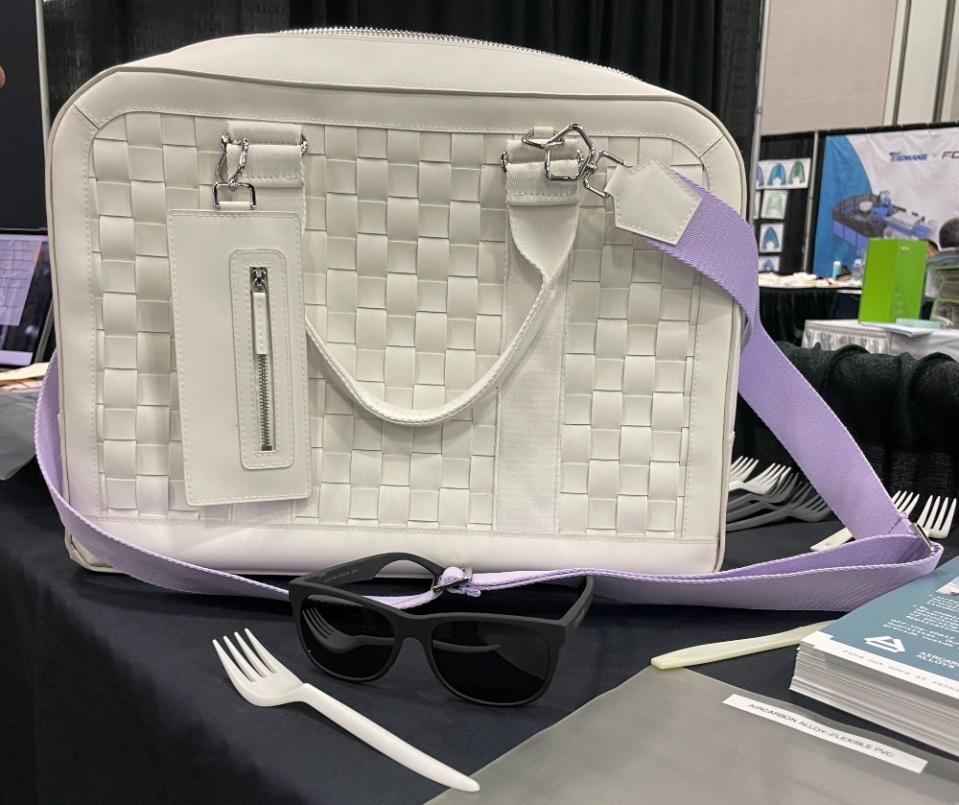
The microbes store energy in their cells as humans would store fat, and that substance is processed into a powder that is then pelletized. The resulting alloy “can then be used in any technique—injection molding, extruding, thermoforming, blow molding—the application really matters not,” Gasparik said. Newlight scientists have worked to make the lab-generated polyester compatible with resins ranging from polypropylene to TPU, PVC, PET and bio-based PLA and PBS. Integrating the alloy into the material mix offsets the carbon emissions generated by conventional polymers, and its applications are wide-ranging, from disposable forks and spoons to sunglasses and faux leather coatings for bags and accessories.
Meanwhile, an array of exhibitors turned out to showcase alternatives to traditional leather.
Guadalajara, Mexico-based Desserto’s cactus-based biomaterial has gained traction in recent years through partnerships with brands like Los Angeles’ Clae, Adidas, H&M, Asics, Beis, Fossil, YY Nation and Karl Lagerfeld, with applications across handbags, travel goods, accessories and footwear. Automotive interiors, too, have become a sales channel for the supplier, which works with BMW’s Startup Garage and Mercedes Benz.
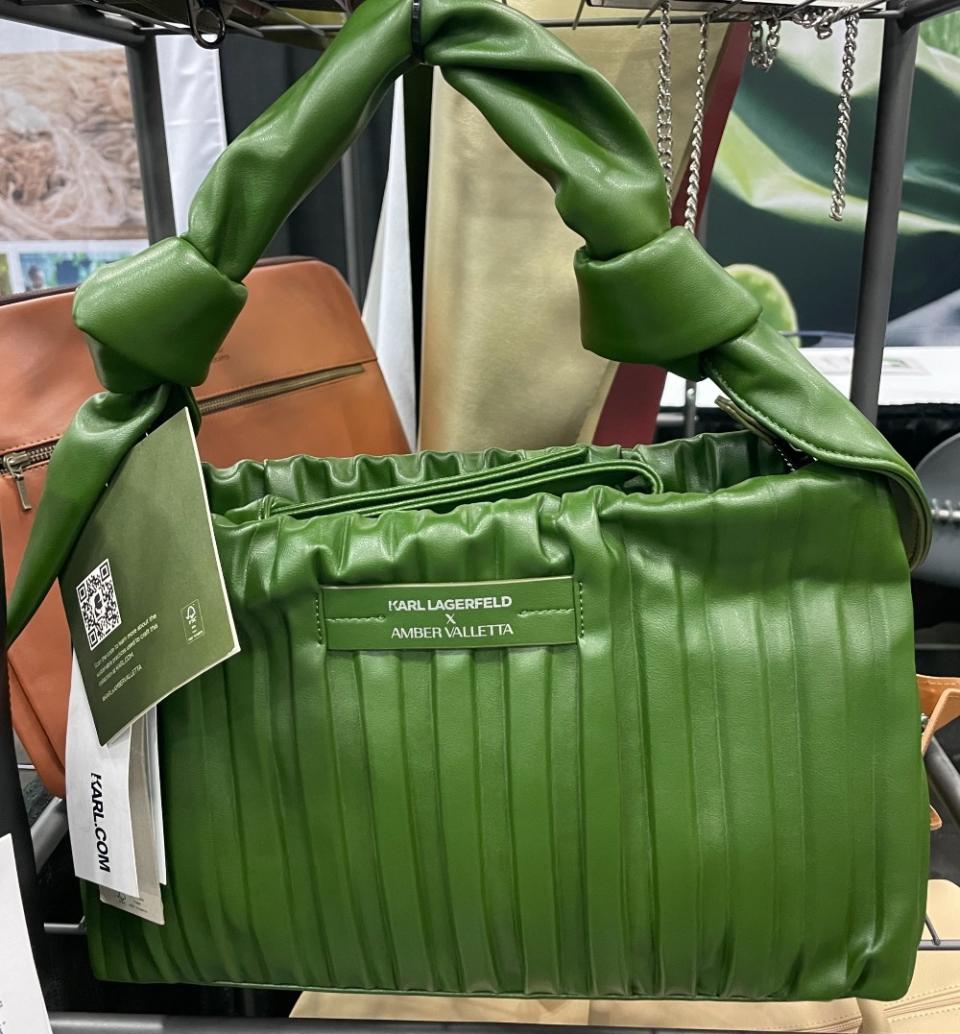
“The market has been changing year by year—when we did the launch [in 2019] the market was just beginning to see plant-based materials,” Desserto director Marte Cazarez said. Now, they’re “a must” for brands looking to “reduce the footprint of the industry value chain.”
With governmental regulations pushing companies across the globe to mitigate their environmental impact and report on their progress, Cazarez said leather and plastics are among the biggest areas of improvement for many sectors. As such, Desserto has expanded its production footprint, opening a factory in Italy last year to service the automotive industry and another facility in South Korea to service the Asian market. “We want to produce locally and distribute locally,” both to broaden the company’s reach and to drive down transportation-related emissions, he said.
“We’re producing in those different places and opening new ranges of materials for high-performance footwear, apparel, and automotive to achieve more applications,” Cazarez added. The company now offers a range of weights and finishes, including pebbled and patent leathers in an array of colors. The expansion will allow Desserto to continue to up its production capacity. “In 2019 we started with a capacity of 500,000 meters per month, and right now we are at 1.4 million meters per month,” the director said.
While the materials manufacturer was looking to make inroads with more large multinational corporations at the show, it maintains a commitment to service small brands and upstarts, too. To date, the company does not have a minimum order quantity (MOQ), meaning that small businesses and even private citizens can buy Desserto cactus leather for their projects. “If you want one meter, we can sell one meter,” Cazarez said.
Jinjiang, China-based leather tannery Xingye Leather Technology launched a line of recycled leather two years ago, and was hoping to introduce the product line to the U.S. market at the Materials Show, according to customer experience specialist Kim Johnson.
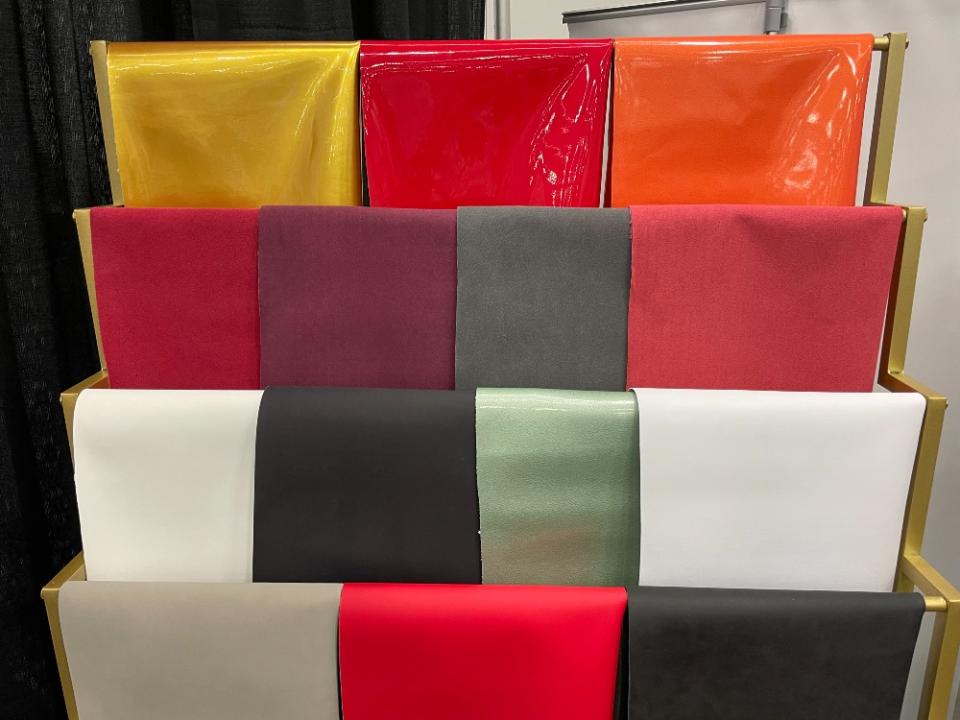
“Recycled leather is not new, but Xingye has invested in a way to do it differently,” she told Sourcing Journal. While some material innovation firms use post-consumer products as a feedstock, Xingye collects leather scraps at the “wet blue” stage, when the hides arrive at the tannery treated only with salt to prevent degradation.
“When they come in, they have to trim the edges, because those edges usually come from looser areas of the hide,” Johnson explained. The resulting scraps are “macerated into a sawdust-like form,” and then a waterjet is used to fuse the substance to a substrate, like recycled nylon or recycled polyester. According to Johnson, no binding agents are used during the process, and the material is created through water or air pressure alone.
The company has developed product lines for performance footwear, apparel, accessories, automotive and home furnishings, she added. A water-based PU coating is added to the surface of the leathers to give them unique properties, like a tumbled effect or a nubuck hand-feel. Without a coating, the material looks and feels nearly identical to conventional suede.
“People are more involved in lifecycle assessments, and if you can prevent waste from going to the landfill in the first place and create a beautiful product—let’s do it,” Johnson said.
Loudon, Tenn.-based Covation Bio brought its hero product, Susterra, to Portland, with the goal of finding partners that are looking to mitigate their usage of petroleum-derived materials and supplement their portfolios with plant-based options.
“What we’re doing is we take industrial corn from the Midwest that is turned into sugar,” global marketing director Patrick Van Waes said. The sugar is fermented to create 1,3 propanediol or PDO, a 100-percent bio-based molecule that is the basis for Coviation’s solutions.
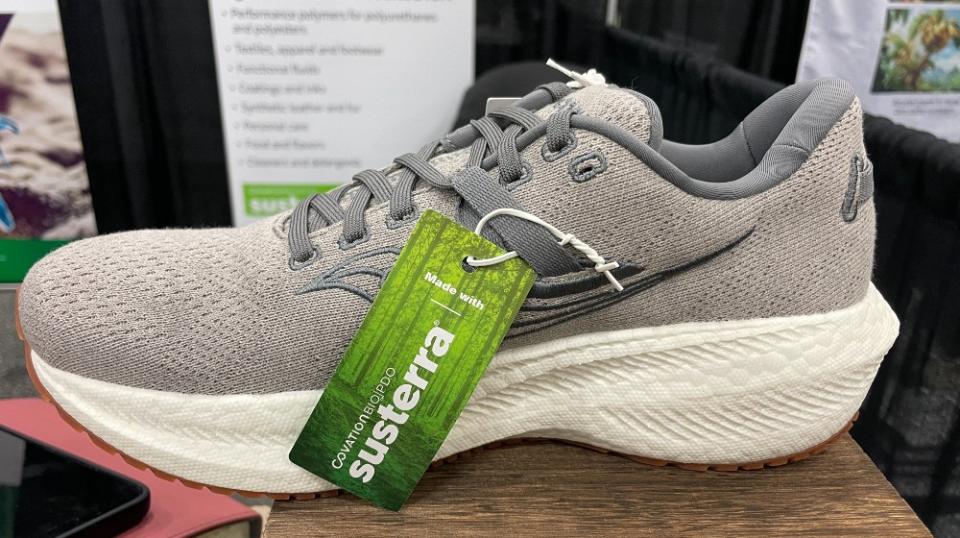
Susterra can be used to create polyurethane (PU) midsoles for running shoes with up to 60 percent bio-content, as well as PU midsole foams and PU dispersion (PUD) coatings for faux leather. The company highlighted an Adidas soccer ball developed for the 2024 UEFA European Football Championship made with alt-leather coated with Susterra. Similar applications can also be created for other products, like handbags and footwear uppers, and can be formulated to vary in softness and hand-feel.
“We worked with a lot of different value chain partners to help them on establishing new resins,” Van Waes said. In Portland, Covation was looking to make brands big and small “aware that there are bio-based solutions for what they do already today.”
“What you see on the market today in fossil fuels—these materials can be done with high levels of bio-based materials,” he added.
Guangdong, China’s Bioplantexx has created a new class of textiles using agricultural waste. The company works with pineapple and banana farmers in the Phillipines, Thailand and Indonesia, sourcing the unused leaves from their trees to break down into fibers. Those fibers are fused together to create footwear insoles, linings for shoes and handbags, and backing textiles for alt-leathers, the group’s CEO and founder, Giorgio Chen, said Wednesday.
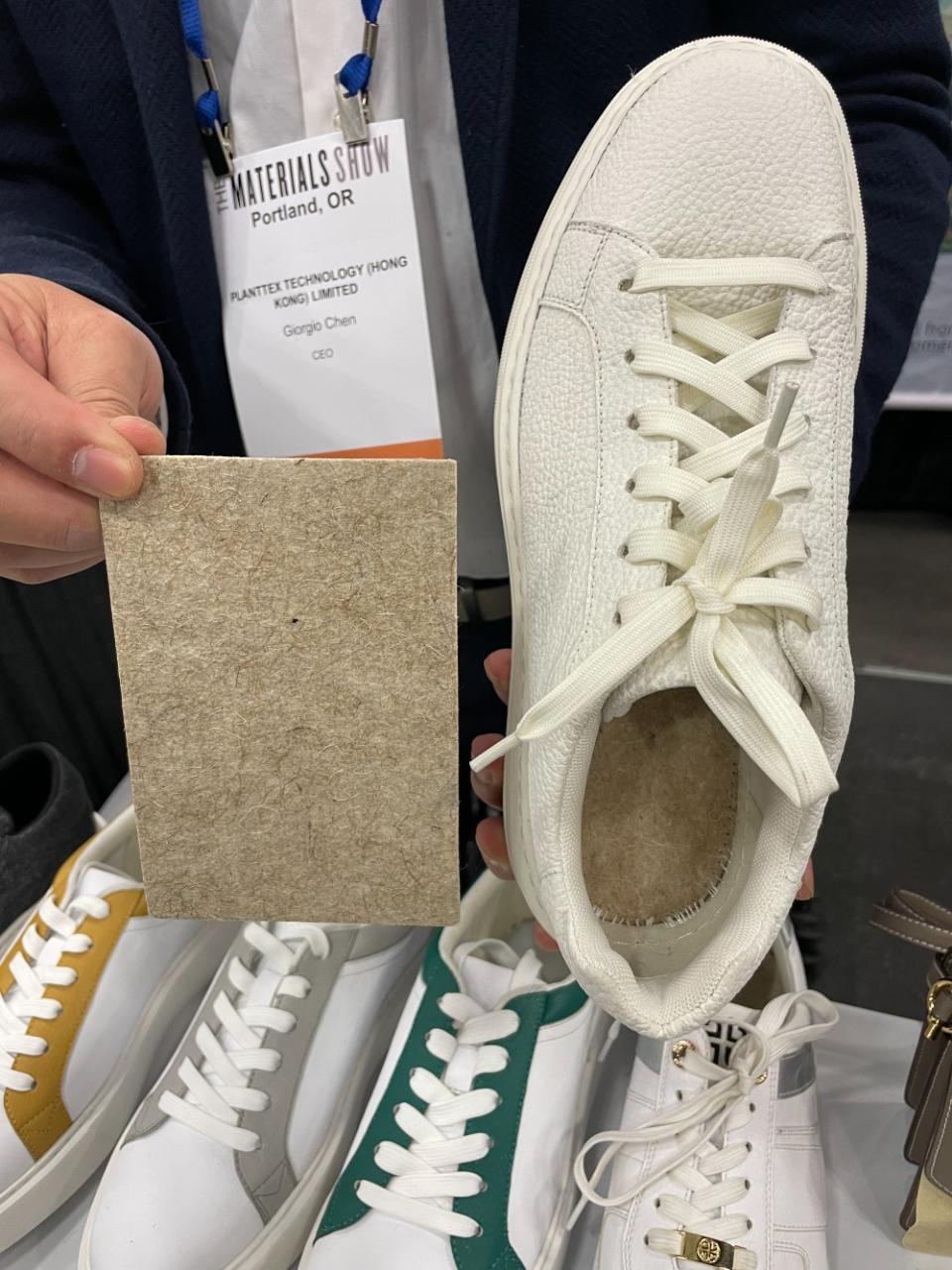
The group works with a range of suppliers to create these products, but will only sell to companies that commit to making majority bio-based products. The group’s mission is to make use of a natural material that would otherwise go to waste, and it has the knock-on effect of creating another revenue stream for farmers, he said.
Meanwhile, footwear foam injection molding company FinProject, which works with brands like camper to create sandals, clogs and foam midsoles, showcased its XL Extralight foam in several variations, including Organix 3.0, a new lightweight compound made with bio-based and circular feedstocks like bio-naphtha, which is made from organic waste. The group recently achieved the International Sustainability and Carbon Certification (ISCC).
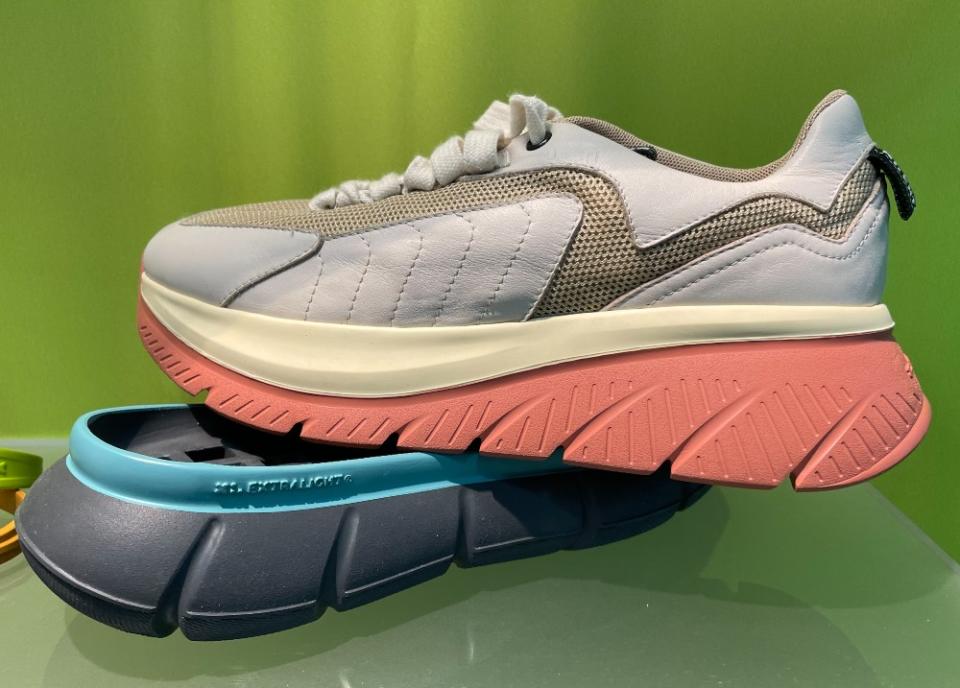
With forthcoming forever-chemical bans weighing on the minds of product developers—especially those in the performance apparel and footwear space—durable water repellent (DWR) finishes that offer an alternative to PFAS also found a market at the Materials Show.
Wisconsin-based Defender Repellent offers a resin-based system for waterproofing products and the factory level, using “a proprietary blend of PFAS-free ingredients to help achieve our results,” vice president of Bicknell Global Innovations JoAnne Gerhartz said.
“Our product is impregnated deep into the material, giving excellent super hydrophobic and stain repellent capabilities on any material it is applied to,” she added. “We do this through breaking down the hydrophilic contaminants that can be found on the materials, enabling the Defender Repellent chemistry to fully impregnate into the material.”
The company’s latest chemistry innovation provides enhanced durability, so consumers can wash their shoes at home without seeing any losses in functionality. “However, how we have formulated our chemistry allows consumers to easily clean their shoes without needing washing,” Gerhartz said. Running a sneaker under water and using a bristled brush to release dirt provides a similar result, she added.
“We’ve been PFAS-free for quite a while—we really led the charge with that, and went through all our development struggles a couple years ago,” another spokesperson said. “As regulations are tightening and being implemented our business interest is growing, because a lot of a lot of other brands can’t meet those requirements. It’s really putting us at the forefront,” he added.

